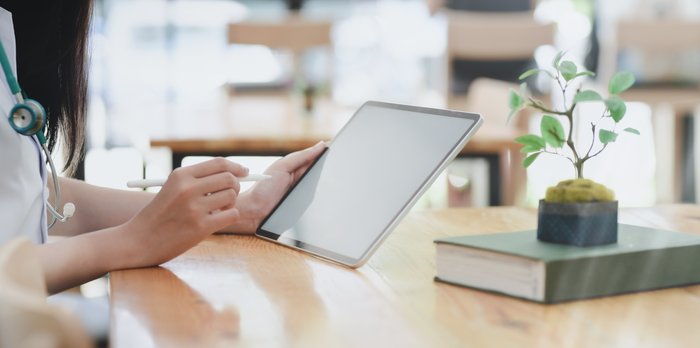Problem to be solved
COVID-19 has presented major challenges for the care sector. One of the most basic and contentious has been how to provide the best possible care to service users and residents who are COVID-positive, symptomatic or in recovery - whilst protecting everyone else living or working in the same setting.
Reducing close contact and cutting down on service users and residents travelling to other healthcare settings are crucial aspects of this adjustment. But this is difficult with traditional models of health provision, which often require residents in care facilities to travel to dedicated health facilities and have their vital signs recorded by mobile clinical staff in close personal proximity.
The project
In response to COVID-19, Hampshire Hospitals NHS Foundation Trust (HHFT) set up a telemedicine service, supported by Wessex Academic Health Science Network. This included piloting the project in three care facilities - a nursing home, care home and step-down facility.
Using Lifelight technology from xim Limited, residents’ vital signs are monitored remotely, and this information is shared securely with HHFT clinicians who then carry out a remote consultation where necessary using video conferencing software.
Lifelight makes rapid and contactless measurements of a person’s blood pressure, pulse and breathing rate. These vital sign readings can be taken in approximately 40 seconds using a standard smartphone or tablet, either by the individual or by a care worker. When a person looks at the camera of a device, Lifelight detects a signal by analysing tiny colour changes of the face with each pulse beat. Based on these signals, algorithms then calculate vital signs. In this pilot, these vital signs are shared with and used by clinicians at HHFT to manage patients as part of a care pathway.
The pilot has improved residents’ experience of care by removing the need to travel, and enabling their vital signs to be recorded easily by a known carer. Lifelight’s contactless functionality potentially overcomes the use of a blood pressure cuff, so reducing ‘white coat syndrome’, where people having their blood pressure measured in clinical settings exhibit blood pressure levels above the normal range. This remote workflow has also optimised clinicians’ time, previously spent travelling to and from care settings.
NHS West Hampshire CCG has fed back that:
Lessons learned
As
with any novel technology, the shift to unfamiliar working practices
was initially challenging for some people, but continues to be piloted.
In this case, COVID-19 highlighted the value of being able to remotely
monitor patients safely. The useability of the technology continues to
be monitored and improved throughout the pilot.
To find out more about this project, contact Suzanne Congdon on email: info@lifelight.ai


